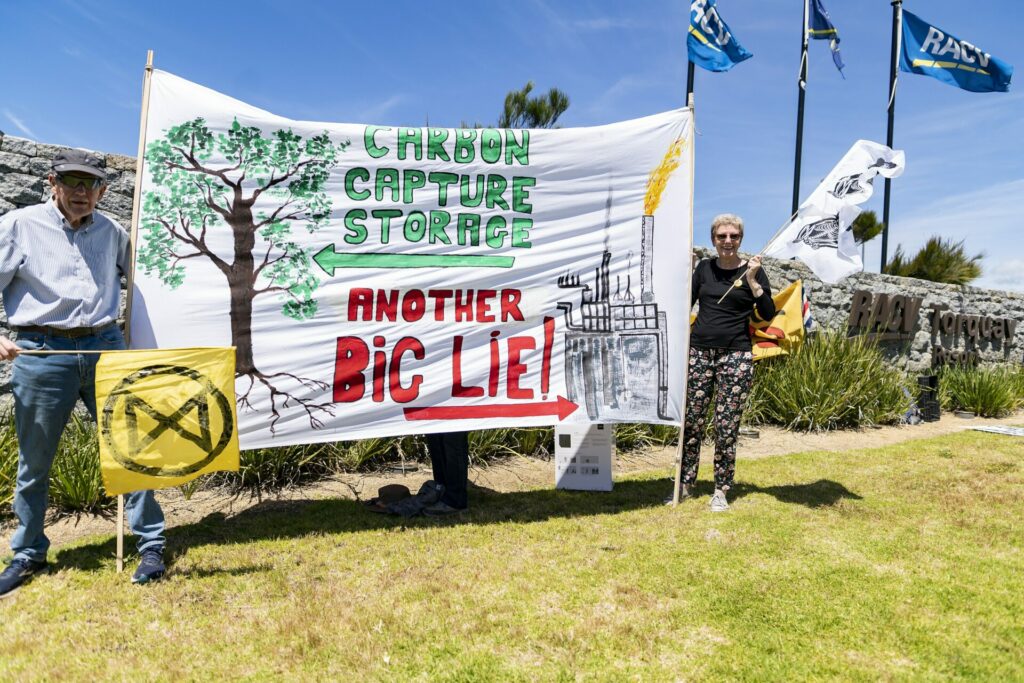With climate high on the global agenda during the COP28 conference, discussions are focussed not only on ways to reduce greenhouse gas emissions but additional strategies are emerging to actively remove carbon dioxide (CO2) from the atmosphere.
As well as natural approaches such as tree planting, more radical ideas include innovative technologies such as Direct Air Capture (DAC) and Carbon Capture and Storage (CCS).
Referred to collectively as carbon dioxide removal (CDR), techniques essentially extract this greenhouse gas from the atmosphere.
The most common form of CDR uses trees, whether through forest restoration or conservation. Earth's forests absorb an impressive 7.6 billion metric tons of carbon annually, a major contribution to mitigating emissions.
Efforts to combat climate change often involve preventing deforestation, restoring cleared areas, and enabling damaged woods to regrow.

Politicians want CCS to work but not everyone is convinced. Credit: Wikimedia Commons
Direct Air Capture (DAC) uses large fans to extract CO2 from the atmosphere, offering a versatile solution to carbon removal. The world's largest DAC facility in Iceland is capable of capturing 4,000 metric tons of carbon annually, showcasing the potential of this innovative approach.
Carbon sequestration involves the natural removal of CO2 through biological, chemical, and physical processes. While processes like photosynthesis store carbon in trees, oceans, soils, and rocks, challenges such as deforestation and disturbances to woodlands can release stored carbon.
Strategies like regenerative agriculture, which focuses on soil health and alternative farming practices, aim to overcome these limitations.
Negative Emissions Technologies (NETs), often referred to as carbon removal technologies, aim to offer a rapid and scalable means of extracting carbon dioxide. Despite being in the research and development phase, governments are increasingly supporting NET initiatives.
The US Department of Energy and the UK's Department for Business, Energy, and Industrial Strategy have recently announced substantial investments in direct air capture and related technologies.
Related News
- Belgium in Brief: The unfair advantage that keeps airlines on top
- A public health victory: Low Emission Zone significantly improves Brussels air quality
Carbon capture and storage (CCS) involves capturing CO2 from point sources, such as industrial emissions, and storing it underground or underwater.
While CCS presents a more established approach than DAC, its commercial-scale implementation faces challenges due to excessive costs and uncertainties in geologic storage capacities. Addressing these challenges is crucial for wider adoption.
The concept of carbon stock protection emphasises preserving forest areas with high carbon and biodiversity benefits.
By distinguishing High Carbon Stock (HCS) and High Conservation Value (HCV) areas from degraded lands, restoration efforts aim to reduce net emissions, enhance habitat capacity, and promote biodiversity.
Removing CO2 from the atmosphere is a multifaceted challenge that requires a combination of nature-based solutions and innovative technologies. As we navigate the complexities of climate change, a comprehensive approach involving emissions reduction, CDR strategies, and advancements in technology is essential.
Governments, industries, and individuals must collaborate to implement and scale these solutions, ensuring a sustainable and resilient future for our planet.

